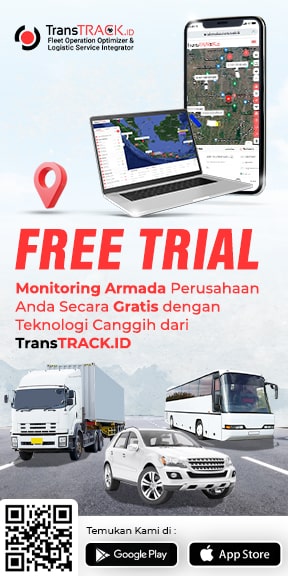Accelerate Port Operation Process with Port Management System!
Posted on November 1, 2024 by Nur Wachda Mihmidati

The Smart Port market is expected to reach a value of USD 5.7 billion by 2027, growing from USD 1.9 billion in 2022 at a CAGR of 24.3%. This growth is driven by the need to improve operational efficiency and reduce carbon footprint, as well as government support in developing port management system infrastructure. Case studies in Pontianak, Ghana and Walvis Bay show how these ports are adapting to new technologies to improve logistics management, overcome operational challenges and attract investment. Transformation towards smart ports is key to supporting sustainability and global competitiveness. Check out the case study!

Pontianak Port Capacity Optimization with Port Management System to Address Container Surge
Pontianak Port in West Kalimantan experienced a 15% increase in container terminal throughput between 2010 and 2011, reaching a volume of 172,892 TEU. Meanwhile, the port capacity calculated using a standard formula shows that the current annual capacity is 131,455 TEU, so the container volume in 2011 already exceeded the terminal capacity by 41,437 TEU. The study also shows that, with the available area, the port should be able to accommodate up to 260,000 TEU without additional area expansion, providing the potential to optimize existing capacity before making major investments.
In terms of operational efficiency, there were some important findings. For example, the average vessel working time per visit is 72 hours, but the effective time is only 43 hours, or about 60% of the total time. If the effective time could be increased to 72 hours, the wharf throughput could increase by 115,261 TEU per year, increasing capacity from 586 TEU/m² to 911 TEU/m². In addition, the time lost due to worker delays and breaks amounts to two hours per shift, or approximately 168 hours per month, which if reduced could add up to handling 18-24 vessels per year. This optimization, together with the improvement in crane performance from 16 cycles to 25 cycles, shows that the port can significantly increase its capacity without the need for major investments in new infrastructure or technology.
Optimizing Equipment Availability with Port Management System to Improve Operational Efficiency at the Port of Walvis Bay
A study highlights the importance of equipment availability in improving operational efficiency at the Bulk and Break Bulk Terminals at the Port of Walvis Bay, where approximately 40% of the total incoming vessels are bulk and break bulk vessels. With turnaround times of 24-48 hours for bulk vessels and 18-20 hours for break bulk, reliance on reliable equipment is essential for smooth operations. The main challenges faced are aging equipment and an increasing business that demands more efficient operations. For example, limited dock cranes and forklift trucks that have outlived their useful life often result in delays, especially when equipment such as grabs and spreaders malfunction. In addition, a lack of operator skills and an untrained workforce also hamper the speed and quality of service at this terminal.
To address these issues, the study recommends the addition of equipment, such as a dedicated mobile port crane for the Bulk Terminal, and the implementation of a terminal management system that can provide real-time tonnage data. This system is expected to help in monitoring equipment performance, so that problems can be addressed before they negatively impact operations. The study also recommended a planned maintenance strategy with annual audits and skills training for operational staff. In addition, as language is a barrier, the use of operator manuals in local languages is recommended to improve understanding. Through these measures, it is expected that the efficiency and capacity of the terminal can be significantly improved without major additional investment.
The Strategic Role of Takoradi Port in Ghana’s Oil and Gas Industry
The Port of Takoradi has an important role to play in Ghana’s oil and gas industry, handling approximately 70% of national exports and 18% of imports, which significantly includes chemicals essential for the oil and mining sectors. The port has taken significant steps to meet the needs of the industry by leasing land to private oil companies and providing one dedicated jetty for oil operations, ensuring minimal vessel turnaround time. In addition, Takoradi Port also serves as an important transit point for equipment required for production on offshore rigs, as well as providing a warehouse for maintenance and storage. This strategic position demonstrates the importance of the port in the operational efficiency of the oil and gas sector, which is vital to the national economy.
However, despite its strategic significance, the port faces various challenges that hamper its effectiveness in meeting the expectations of oil and gas clients. Survey data indicates persistent problems, such as delays in security access updates, inaccurate information on supply vessel arrivals, and a lack of appropriate equipment, including mobile port cranes. In addition, operational difficulties such as low availability of clean water, poor internal road conditions, and inadequate lighting have been identified as critical bottlenecks. These issues collectively contribute to the perception among industry stakeholders that Takoradi Port lags behind in service delivery. To address these gaps, improvement recommendations have been proposed, emphasizing staff training, better communication systems, and the potential transfer of services to private parties to improve operational efficiency and customer satisfaction.
TransTRACK Port Transport System Solution: Innovation in Port Transportation Management
TransTRACK Port Transport System is an innovative solution designed to improve port operational efficiency through the utilization of advanced technology. One of the key features of the system is its real-time tracking capability, which allows users to monitor the position and status of vehicles and containers in real time. With this feature, port managers can optimize transportation flow, reduce waiting time, and improve coordination between various parties involved in port operations, such as crane operators, truck drivers, and logistics parties.
In addition, TransTRACK also comes with an integrated data management system, which enables in-depth analysis of transportation patterns and resource usage. This feature provides valuable insights that can be used to plan and implement efficiency improvement strategies, including optimal route planning and dynamic demand-based rescheduling. In addition, the system supports better communication between users by providing an application-based platform that allows all stakeholders to share information and accelerate decision-making. With these features, TransTRACK Port Transport System not only improves operational efficiency but also contributes to carbon footprint reduction by optimizing vehicle usage and reducing congestion in the port area.
With the real-time tracking and integrated data management features of TransTRACK, you can efficiently monitor and manage all aspects of port transportation. Join us to reduce lead times, speed up decision-making, and improve collaboration between teams.
Contact us now for a free demo and see how TransTRACK can revolutionize your port operations!
Topic :
 Bahasa Indonesia
Bahasa Indonesia








